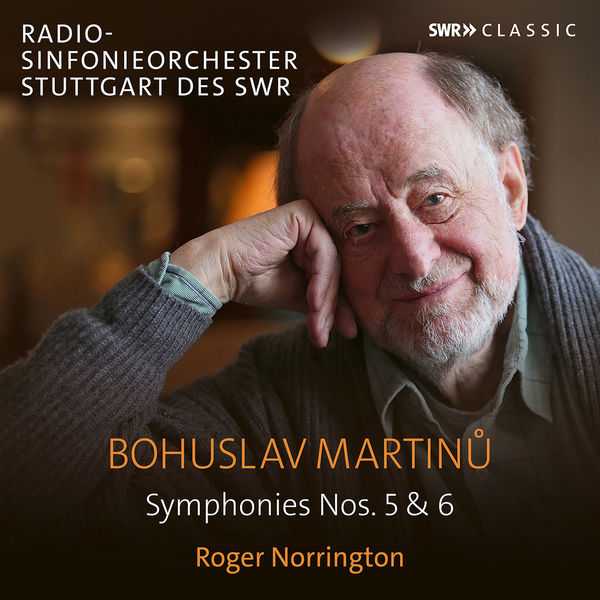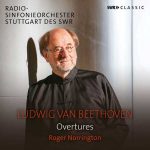
Composer: Bohuslav Martinů
Orchestra: Radio-Sinfonieorchester Stuttgart des SWR
Conductor: Sir Roger Norrington
Format: FLAC (tracks)
Label: SWR Music
Catalogue: SWR19119CD
Release: 2022
Size: 263 MB
Recovery: +3%
Scan: yes
Symphony No. 5, H. 310
01. I. Adagio – Allegro
02. II. Larghetto
03. III. Lento – Allegro
Symphony No. 6 ‘Fantaises symphoniques’, H. 343
04. I. Lento
05. II. Poco allegro
06. III. Lento
“Bohuslav Martinů’s six symphonies were composed between 1942 and 1953 during the composer’s years in America. He completed the first five symphonies at the astonishing rate of one per year, although not at any artistic expense – years later, he described the Fifth Symphony as a ‘well organised, organic, well ordered work’ in an interview with The New York Times. A full seven years elapsed, however, before Martinů completed his Sixth. One of his ‘unexpected’ works, it took, quite unusually for him, two years to complete, and its form proved to be a radical change from his previous symphonies. As he wrote to his friend Šafránek – ‘I am about to create fantasias!’ In November 2021 Sir Roger Norrington announced his retirement from conducting. From 1998 to 2011 he was chief conductor of the former Stuttgart Radio Symphony Orchestra (today the SWR Symphonieorchester), and during that time caused an international stir with what came to be known as the ‘Stuttgart Sound’ – a synthesis of historically-informed performance practice with the technical capabilities of a modern orchestra. Whether Mozart, Haydn, Bruckner, Brahms or Martinů, Norrington sought to recreate a faithful performance experience, adjusting the orchestra’s size and seating plan, and creating an authentic sound without vibrato.
Conductor Roger Norrington made his name as an iconoclastic interpreter of early music but has broadened his range in later years. A performance of Bohuslav Martinu’s music by the Radio-Sinfonieorchester Stuttgart des SWR might seem to have little to do with historical performance practice, but apparently, Norrington has done research on early 20th century orchestra size and seating arrangements. Norrington has hardly mellowed in old age, and there will be as many opinions about this release as there are listeners. The usual trademarks of his style are all here: the fast (sometimes dangerously fast) tempos that distort the usual relationships among movements and sections of movements, the entirely individual phrasing, and the flat affect with minimal vibrato. Some will find these Martinu symphonies willfully idiosyncratic; others will, as usual, hail these as fresh looks at the music, and there are enough of these that the album landed on classical best-seller charts in the summer of 2022, even as the recordings were made in 2008 (the Symphony No. 5) and 2003 (the Symphony No. 6). This is not the place to attempt some kind of grand resolution of these differing perspectives, but two things may be noted. First, there is a strong neoclassical strain in Martinu’s music, and it is especially cleverly elaborated in these two later works. The composer does not hew to Baroque forms but rearranges the building blocks, so to speak, into his own structures. For this reason, Martinu makes an appealing subject for the former Baroque specialist Norrington, and those new to his approach in 20th century music might try this recording out. Second, and this is often true with Norrington, approaching the performance fresh, without the sound of other readings in one’s ears, yields the best results. Bottom line: Norrington is as original as ever and as outrageous as ever here, and listeners may pay their money and take their choices.



